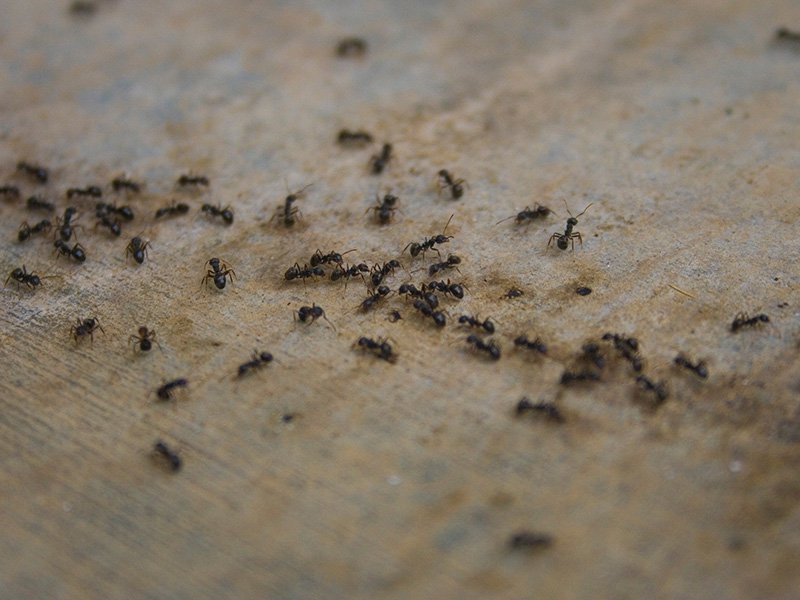Why Are There So Many Ants in August?
Ant activity tends to peak in August for a few reasons:
- Hot and dry weather: When it’s hot and dry outside, ants struggle to find reliable natural water sources. That’s why they often show up around sinks, tubs, pet water dishes, and other damp spots inside your home.
- Foraging behavior: Summer is prime time for ant colonies to grow and forage. Worker ants are constantly on the move, searching for food. They leave a chemical trail for others to follow once they find a reliable source (like your pantry or garbage can). Before you know it, your home becomes a regular stop on their supply run.
- Colony expansion: During summer, ant colonies are at their largest and most active. If they outgrow their current nest or feel threatened, they may split off and form satellite colonies — sometimes inside your walls, attic, or under your foundation.
What Types of Ants Invade Homes in Northern California?
Several species of ants are common in our region. While they may look similar, different ants behave differently and often require different treatment methods. Here are a few you might run into:
- Carpenter ants: Big, black ants that chew through wood to make their nests. They don’t eat wood like termites, but they can still cause damage if left untreated.
- Odorous house ants: Small, dark brown or black ants that smell like rotten coconut when crushed. These are one of the most common ants found in homes.
- Pavement ants: These tiny ants build nests in cracks in sidewalks, driveways, and foundations. Indoors, they’ll look for greasy and sweet foods.
- Ghost ants: Tiny ants with pale, almost see-through legs and abdomens. They’re sneaky and hard to spot until the infestation grows.
- Rover ants: Light brown to black ants that move quickly and show up near sinks, bathtubs, and other moist areas.
Why Ants Love Your Home Right Now
Ants and humans have similar needs — food, water, and comfort. Your home provides all three, which makes it attractive to ants.
- Food: Ants eat sweets, proteins, and even pet food. Open containers and crumbs are invitations.
- Water: Leaky faucets, pet water dishes, and humid rooms provide the moisture ants need.
- Shelter: Sometimes ants move inside to nest if outdoor colonies are disturbed or split.
Smart Prevention Tips to Keep Ants Out
Eliminate Food Sources
- Wipe down counters regularly
- Store pantry foods in airtight containers
- Clean up crumbs promptly
- Wash dishes after use
- Don’t leave food out
Control Moisture
- Fix leaks and dripping faucets
- Empty pet water bowls at night
- Use dehumidifiers in damp areas
Seal Entry Points
- Caulk cracks and gaps in the foundation
- Weatherstrip doors and windows
- Install screens on windows
Maintain Your Yard
- Trim vegetation touching your home
- Keep mulch away from the foundation
- Remove tree branches, leaf litter, and other yard debris
When to Call Big Time Pest Control
DIY methods often only temporarily reduce the number of ants — they don’t eliminate the colony, so ants keep coming back. It’s time to call Big Time Pest Control if:
- You’ve tried DIY but still see ants indoors
- You’ve found carpenter ants, which can damage wooden structures
- You want proactive ant protection
Our professional ant control eliminates the entire colony, preventing re-infestation. It also provides long-term protection and is a better choice than DIY sprays.
If ants are invading your home and you want to get rid of them for good, call Big Time Pest Control. Our licensed local experts offer same-day service and effective home pest control services for homes in Sacramento, Anderson, Redding, and throughout Northern California.





















